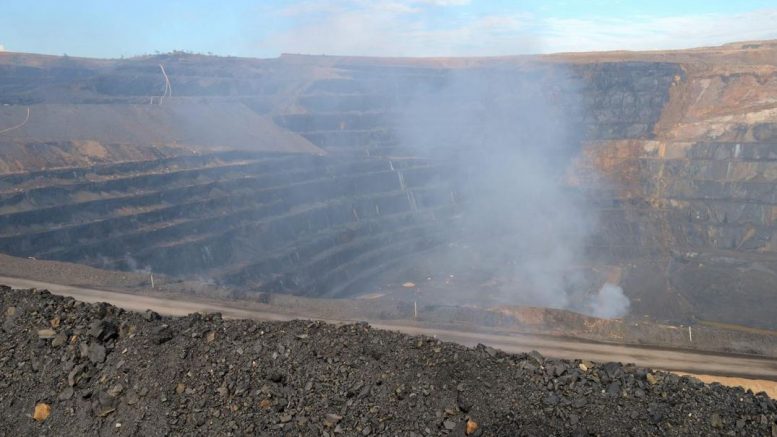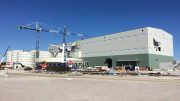To ease in to the Prospectors & Developers Association of Canada annual convention in Toronto in early March, it’s always a good idea to take in the commodity talks on the first day, where this year’s presenters were almost uniformly bullish on the outlook for commodity prices.
Mark Cutifani, chief executive of Anglo American, launched the afternoon talks imploring the mining industry audience that “it’s up to us to better explain our story” to the wider public who “say we don’t need mining.” He discussed the past few years of deep cuts and consolidation at Anglo that have resulted in fewer but far more productive assets, commenting that “there are no bad commodities, only bad projects.”
Jon Butcher, principal economist at Wood Mackenzie, said the global economic outlook for the next five years hinges on growth rates in China and the U.S. economies, where there are still uncertainties. With “collapse off the table,” he foresaw global growth rising 0.2% to 2.5% in 2017 and to 2.7% in 2019, with U.S. consumers doing “exceedingly well” amid a recovery in oil prices, even if it was “not all rosy” due to European growth slowing.
Paul Robinson, director at CRU Group, said there were two megatrends that started in 2015: resource nationalism worldwide, and environmental issues in China. He urged “cautious optimism,” as it would be “a good year from a price perspective in 2017” for commodity prices. Robinson said cobalt “has almost everything” in terms of auspicious supply and demand factors, but added that “with iron ore, we are worried,” because profitable mines in China not operating at the moment due to environmental reasons represent a cap on prices.
As for nickel, Alex Laugharne, principal consultant at CRU Group, said “prices were horrible in 2016” amid five straight years of “persistent oversupply and a substantial stock overhang.” He noted that at nickel prices of US$10,000 per tonne, half the nickel miners were losing money on a cash basis. He described the Philippines as “more confusing and complicated than Indonesia” in terms of nickel-related government policies, but overall predicted a balanced global nickel market in 2017.
Nicolas Carter, executive vice-president at Ux Consulting, described Japan as a “hindrance” in the uranium market, with only 16 to 18 out of 54 nuclear power units in the country up and operating by 2020–2021, as low-cost liquefied natural gas and coal plants pick up the slack. He predicted China would overtake Japan, France and the U.S. in nuclear power capacity by 2028, and said “China is the most important country for the future of nuclear,” and that uranium prices would move upwards beginning in 2019–2021.
Michael Schwartz, manager of market research at Teck Resources, noted that at six years, we have just gone through the “longest copper price decline in history” and now copper mine supply is “set to disappoint,” and is “starting to peak,” as the effects of past high-grading and a lack of reinvestment in mines set in.
Ryan Cochrane, senior research manager at Wood Mackenzie, compared the world’s gold mines with its copper mines, and pointed to the mine-life contraction across the gold sector as being “most interesting,” compounded by accelerated grade decline across the gold sector (60% decline for gold grades versus 30% for copper grades). He said gold mine supply is likely to “peak this year and decline thereafter” (depending on Grasberg output) and move into “sharp mine supply contraction in the near to mid-term.” Copper mine production growth is set to “pause this year, then end in 2020,” as “squeezed majors” delay new mine development.
For the zinc price, Andrew Thomas, senior analyst at Wood Mackenzie, wondered aloud “how high can it go?” and tossed out numbers such as US$2,500 and US$2,900 per tonne. Zinc “outperformed the rest of the base metals complex” in 2016, as we saw the “biggest year-over-year drop in zinc production ever.” Most of the supply reduction came from Australia, with Chinese smelters “bearing the brunt of the loss.”
William Tankard, director at EWT Associates in London, described precious metal exchange-traded funds as “stable or down,” with palladium down the most. He argued there is more upside for gold prices versus other precious metals, and forecast a “status quo” gold price of US$1,150 per oz. for 2017 and US$17 per oz. for silver, which will take its cues from gold. He noted that hedges for platinum will mean that prices will be “on their back foot” and preferred palladium over platinum, forecasting 2017 prices of US$975 per oz. for platinum and US$750 per oz. for palladium.






Be the first to comment on "PDAC 2017: Copper, zinc looking good for 2017"